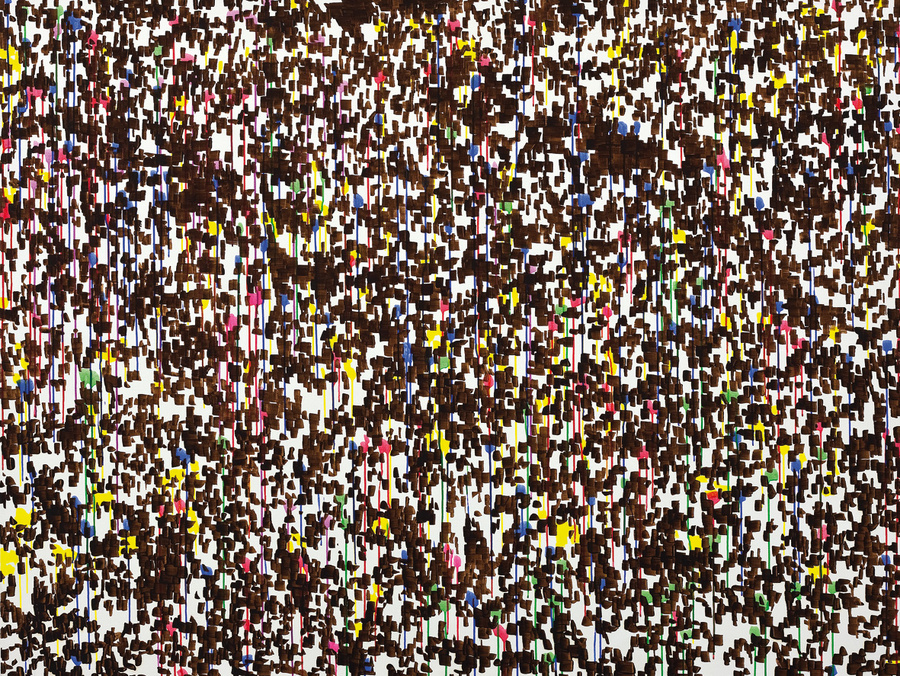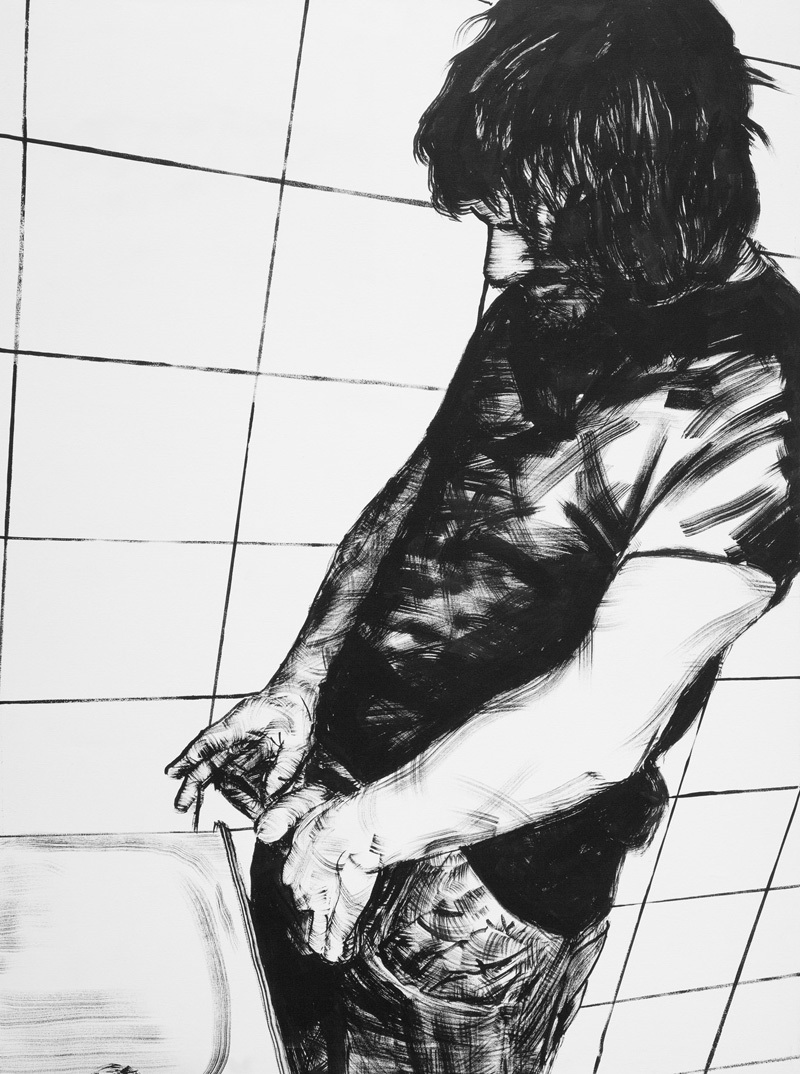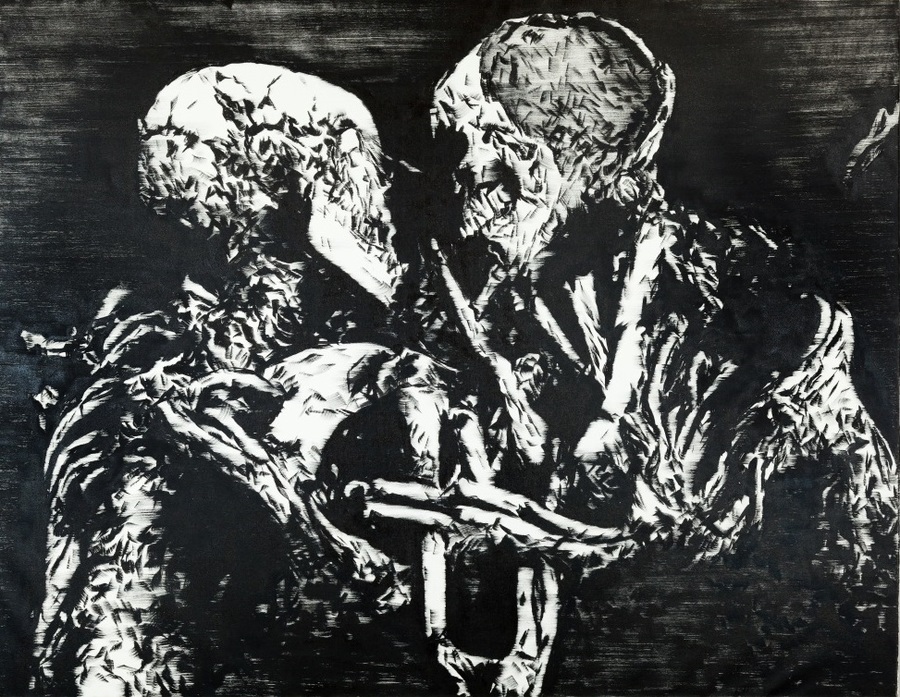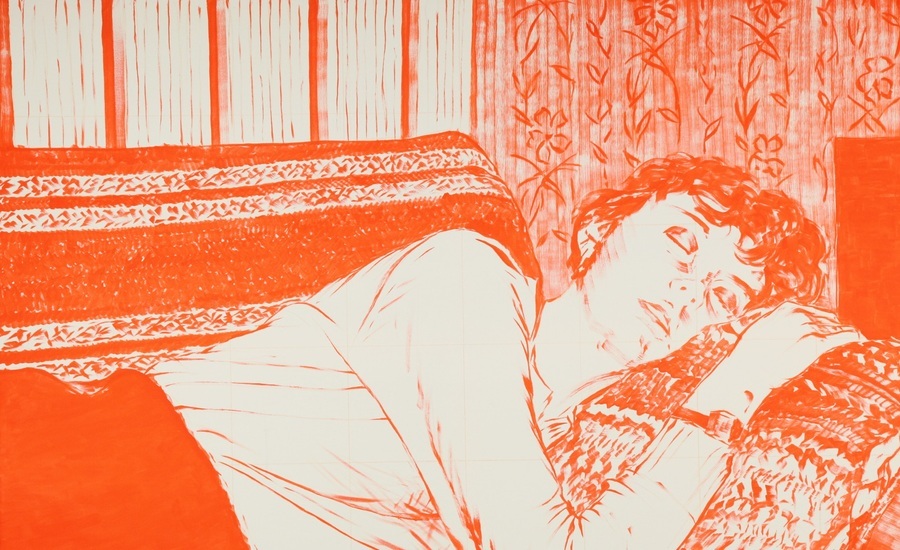Bartek Materka
(b. 1973)
Painting, photography. His works reveal an interest in the malfunctioning of the ocular apparatus. While recording the surrounding reality, the artist simultaneously demonstrates distortions (for instance technical or biological) which can affect the image. These painterly experiments, apart from being motivated by scientific interest, betray strong emotions. Besides autobiographical themes, works emerge which analyse psychological and sociological phenomena.
The majority of Materka's pictures are connected by an underlying privacy of intention: fascinations, family, acquaintances, particular places, cars, and found photographs. Materka has noticed these relations – an artist can hear his own pictures speak – and, at least for a moment , he has decided to forget about himself and think about the crowd. As in his earlier pictures, he has used an open composition that does not balance out within the frame of the painting, but rather carries over into some sort of infinity. He has renounced moments of culmination but applied concentrated energy, introducing primary colours in some parts of the monotone compositions. He has shown his crowd in an anonymous equality of silhouettes, x-raying certain small groups with coloured light. This method has been used for several paintings, each of which applies a slightly different way of drawing the figures. The principles of visualisation lie somewhere on a scale between geometry and blot.
The suspension of privacy in favour of crowdness is something quite fresh, and it is too early to foresee the artistic consequences of such a move. Nevertheless, a surprising conception that has little in common with painting has already appeared in this context. It takes the form of wallpaper with surnames printed on it. A strip of it is affixed to the wall within visual range. Once again, this is an open composition, and the number of names depends on the amount of wall available; it should not be fewer than several hundred thousand. The work can be expanded to include a digital voice synthesizer reading out the names. The content is 'named anonymity'. Thus there has appeared in Materka’s painting an intriguing jump from representative painting – a medium strongly dependent on 'physical contact with the artist' – to conceptual work untouched by the artist’s hand. Within the scope of reflections on painting, a problem has arisen that refuses to be expressed in painting, but rather demands another medium.
Maria Anna Potocka
trans. William Brand



